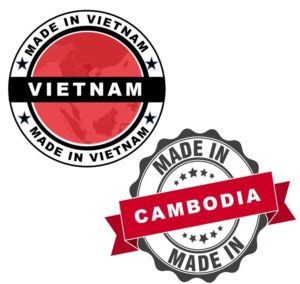 Some Chinese exporters are going to extreme lengths to dodge tariffs imposed by the Trump Administration.
Some Chinese exporters are going to extreme lengths to dodge tariffs imposed by the Trump Administration.
The Department of Homeland Security has fined several companies for routing goods through Cambodia in an effort to dodge tariffs on Chinese imports. The goods were exported via a Chinese-owned special economic zone in Sihanoukville, Cambodia. According to the South China Morning Post, a spokesman for the U.S. Embassy did not name or say how many companies had been fined for evading the tariffs, what the fines were, or what goods had been exported.
Earlier this month authorities in Hanoi announced that they are cracking down on the illegal practice of shipping goods to Vietnam to obtain certificates of origin and “Made in Vietnam” labels. Vietnam’s customs department said it found dozens of cases of exporters illegally re-labelling Chinese goods with “Made in Vietnam” to avoid the escalating tariffs on Chinese exports to the U.S. The cases also included fake product-origin certificates and illegal transfers by Chinese exporters trying to avoid the tariffs.
In response, the Vietnamese government is tightening the supply of Vietnam certificates of origin and increasing factory inspections to ensure that rogue companies facilitating the “Made in Vietnam” fakes won’t taint the country’s brand recognition. Vietnam has also pledged to increase penalties on trade-related fraud.
Chua Hak Bin, a senior economist at Maybank Kim Eng Research Pte. in Singapore said “A cottage industry for circumventing U.S. tariffs will likely bloom, given the high tariff rates and huge potential profit. ASEAN governments will likely crackdown on such re-routing for fear of being seen as a backdoor.”
OCEANAIR’s Vice President of Customs and Import Compliance, Bill Connolly, reminds importers that they alone are responsible and liable for any false declarations made to U.S. Customs & Border Protection. His advice to importers is that they must verify where their imported goods are physically being manufactured. In many cases that means an overseas trip to the factory to verify it exists. In today’s internet world, you cannot be too careful – anything can be made to look real. If an importer cannot make the physical visit to verify the manufacturing process, they must find a trust worthy, independent source to provide the verification. Bill also suggests that you obtain references on the company and ask questions such as how long have they been in business, and how many locations do they have that perform the manufacturing functions? Know that if you have been ordering your product from China and suddenly you start declaring a new country of origin for the same product, your transactions will be scrutinized. CBP has many tools at their disposal. Remember the burden of proof is on you.
_______________
Sources
- South China Morning Post, US fines companies exporting goods via Cambodia to dodge Trump’s trade war tariffs on China
- The LOADSTAR, Authorities launch clampdown on fake ‘Made in Vietnam’ labels on exports to US
- Bloomberg, Chinese Exporters Dodge Tariffs With Fake Made-in-Vietnam Labels

